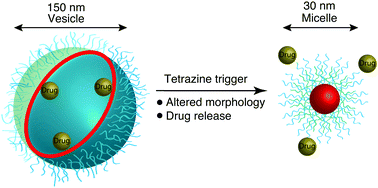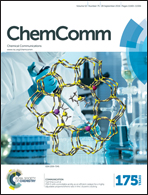Nanoparticle “switch-on” by tetrazine triggering†
Abstract
This work describes how a small-molecule chemical trigger, reacting through the mediatory of an inverse electron demand Diels–Alder reaction, results in enhanced cellular uptake and selective nanoparticle disintegration and cargo liberation, via gross polymeric morphological alterations. The power of these responsive nanoparticles is demonstrated through encapsulation of the anti-cancer agent doxorubicin and its triggered release, allowing controlled cell death in response to a small-molecule chemical trigger.


 Please wait while we load your content...
Please wait while we load your content...